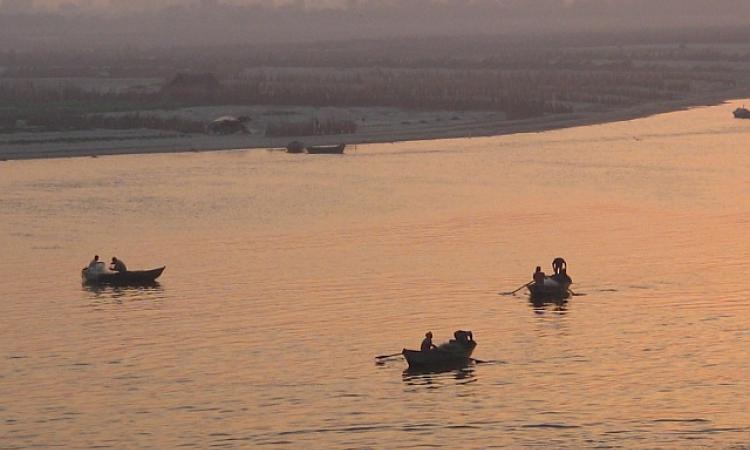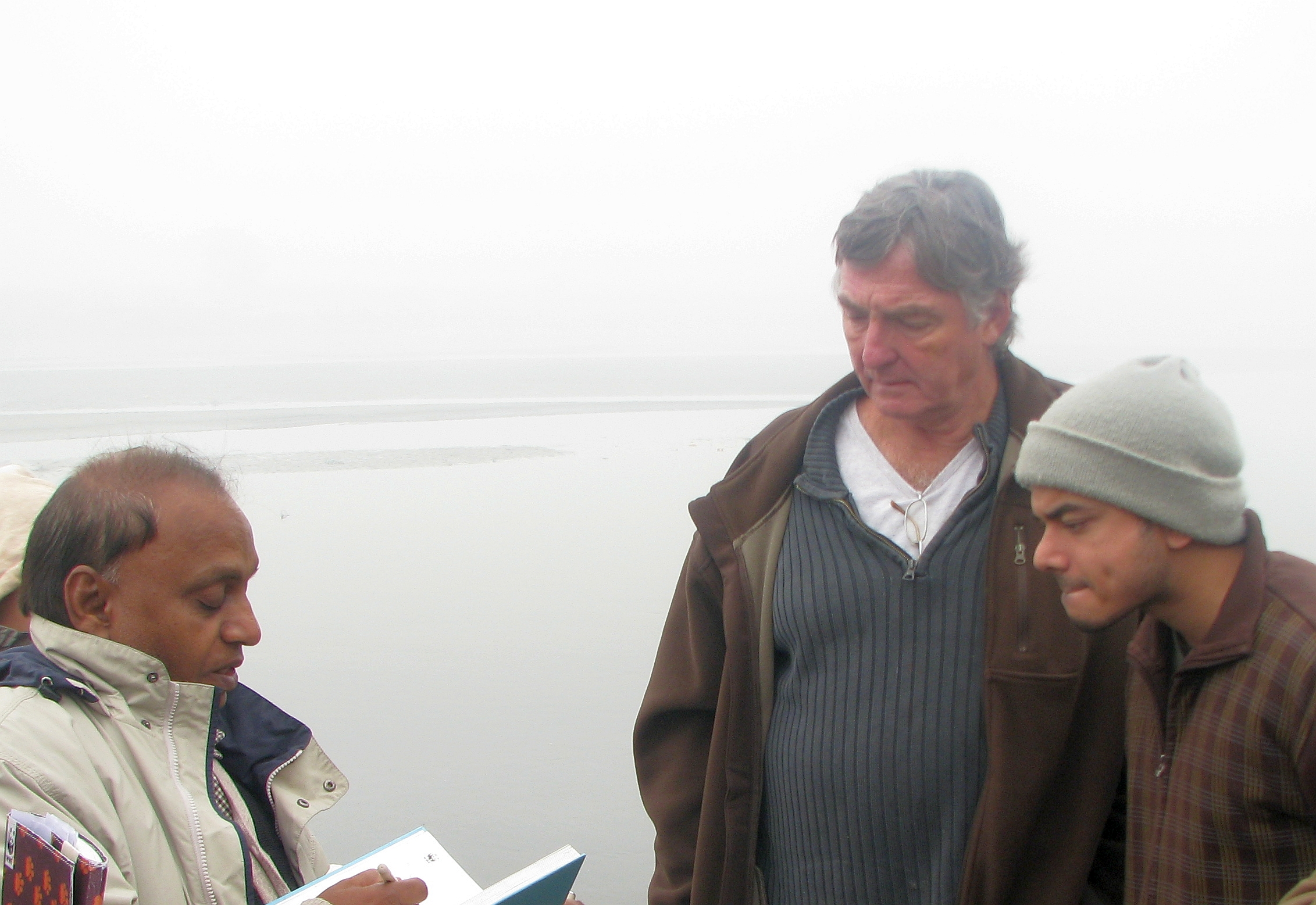
Professor Jay O'Keeffe is well-known to all those who are interested in the concept of environmental flow releases. The Professor has been involved in this, all over the world, since the seventies.
The phrase 'environmental flow releases' encompasses a complex set of assessments and negotiations. Simply put, environmental flows are those flows that are required by a river to continue existing. These flows are a regime of seasonal highs and lows, extreme floods, and extreme drought periods, all of which are used by the many lifeforms that depend on a river. Assessment of environmental flows involves determining the amount of each of these flow 'blocks' and justifying the need for each.
Once determined, this set of flows needs to be presented to the various water managers that govern the use of a river-- they need to be convinced of the importance of releasing these flows. This entire process requires considerable technical knowledge, management techniques and negotiation skills.
For the last few years, O'Keeffe has guided the first attempts at determining and negotiating flow requirements of Indian rivers. Here, he talks with the India Water Portal about his experiences.
What has been your involvement with environmental flow assessment in India?
In 2005, WWF asked me to give a presentation on environmental flows at a meeting of their international water programmes in Hyderabad. The different WWF offices decided to call me in to add environmental flows to their existing basin management programmes.
WWF India had a programme going on the Gambhir for which they wanted to do an environmental flow assessment. They called me in to do a training programme in 2006. That was the first training programme in India.
In 2007, WWF decided to do a high-profile project on the Ganga. They set up a small team, a very impressive one. We set up this training programme where I would facilitate the process on the Upper Ganga with an all-local team of specialists. I would teach them the process, and then we would find an Indian champion. The second project would be run by the Indian champion, with me just as a mentor in the background. After that, you have got a group of people that know how to run the process, can do it, and can also train other teams.
How has that worked?
It has worked well, because now we are on the Ramganga, doing the second project with Nitin Kaushal as the facilitator. There are people now who have done at least two assessments, and who are familiar with the methodology. There is no reason why that should not go ahead.
The other thing that has happened is that largely because of WWF's efforts, and also because of people like Dr. Tare, it has become a high-profile issue in government circles. Working on a river like the Ganga, with a team of senior experts has worked incredibly well in India.
But the process of e-flows in India is looking very successful; I am pretty sure it is going to be mainstreamed into water resource management policy fairly soon. You can really see that there is a huge momentum and determination in India. The government has suggested zero-effluent discharge, which will be incredible if they manage to do it.
For me it's been wonderful to be involved in environmental flows assessment in India and it's progressed much faster than I thought it would. I give the credit for that to WWF India and the people they've brought.
What about implementation of the recommended flows?
Now there is a general understanding of the concept of e-flows and a lot of support for it. The implementation always lags behind. It is very easy to assess what the flows need to be. But especially in over-allocated rivers you need to take water away from someone to keep it in the river and that's very difficult. It is a matter of gradually implementing, maybe in easier rivers first rather than rivers like the Ganga which are very over-allocated.
The process in India has really brought to the forefront the socio-cultural aspects. It is important to protect the biodiversity and the ecosystem, but people have to understand and buy into the environmental flows process. If people don't think it is important, if people don't understand what you are doing and why you are doing it, you can do the best science in the world and it is not going to work.
If you have the kind of process that we had on the Ganga and the Ramganga where you are bringing people on board, that turns out to be vital for making this kind of thing successful.
You've got to be able to do the assessment in a convincing way. You must have solid motivations and you have to be able to convince people that the reason why we want this is because we've done the hydraulics, the research, the monitoring. Then you have a chance of making it happen.
What can streamline the implementation of environmental flow releases in India?
Implementation is very country-specific, province-specific, river specific. It obviously depends on people's determination to do it and the level of over-exploitation of the river. It is very easy in a river which is not over-exploited, because the environmental flows are still in the river. It is very difficult in a river like the Ganga where you are having to claw back the water that is already being used if you want to maintain reasonable flows in the river.
On the Ramganga you have big storage and diversions to the Ganga. To improve flows downstream of the dam, you are going to have to change the way that damand the transfers to the Ganga are managed.
In other parts of the world there have been all sorts of techniques used.
What do you see as the next steps?
One is to put in place a policy that formally recognises environmental flows. India is at the stage where there have been pilot projects like we did on the Ganga and the Ramganga; there needs to be a centralised effort now.
This should be to coordinate and help various e-flows projects, to be a repository for reports and data, to provide advice to people, and it should probably be located in the Ministry. This should be to just coordinate the effort, rather than have individual efforts all over the country; but not be pejorative.
This central body could run training courses. We now have a group of experienced people, but presumably there is a need of a team in all of the different states.
International links need to be fostered. Environmental flows efforts are happening all over the world; a sharing of experiences needs to take place.
Promotion and communication of the concept of environmental flows at every level needs to include government staff and everybody else to mainstream it as part of regular water resources management. While there is increased awareness of environmental flows, there still isn't complete buy-in. People dont see it as something we just have to do, or we will lose our rivers.
Pilot implementation of environmental flow releases is important. We are doing difficult rivers like the Ganga and the Ramganga but it would be good at the same time, to look for not-over allocated rivers where you can get a quick implementation without too much stress. Because actually being able to show people how it works is very powerful.
How does environmental flows fit into the Development vs. Environment argument?
For me, environmental flows is always a compromise. You are not saying you cannot use this river. We need to recognise that no one is going to leave these rivers alone. People need to use their water resources, but we also need to protect them as a long term sustainable resource. With environmental flows, what we are saying is how much can people use this river without unacceptably degrading it.
I think of e-flows quite a lot as a speed limit for rivers. On the roads, if you have a new car, you can drive at 200 kilometers per hour but you are not allowed to, because you are likely to kill people. You might get to wherever you are going faster, but you might not get there at all.
Speed limits are not set for economic limits, they are set for safety. And they might be a bit arbitrary- if the limit is 60 kmph, will it make a lot of difference if it is 65 kmph? And the same with environmental flows. It is difficult to assess what the difference could be between 5 cumecs or 4 cumecs in the dry season; but like speed limits you need to set some kind of threshold. So much and no further, because the possibility is that you might cause damage.
There is a big drive to add an economic justification to environmental flows. It is easy to compute that water for irrigation and industry generates so many billion dollars a year. People tend to ask what water for environmental flows is going to generate. My answer is, 'that's not the question you should be asking'.
Economic models discount profits in the future. What e-flows do is provide long-term benefits in terms of a sustainable river. We can't ever assume that these are for us to use. What about our grandchildren.
We have to protect these resources; if we don't, what is there for anybody?'
/articles/speed-limit-river-use